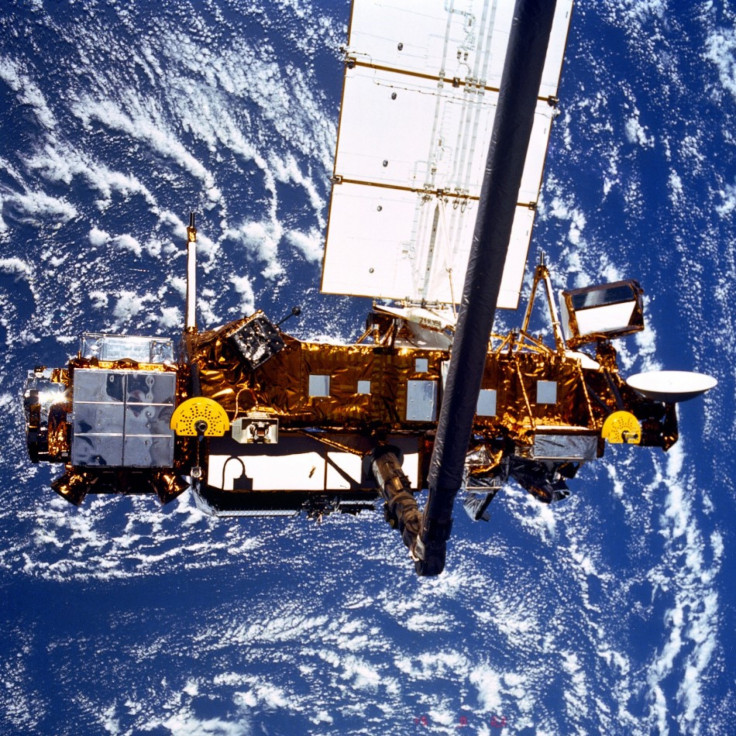NASA: Likely That Defunct Satellite is Down by Now

NASA breaking down its suspense on Friday said that it's possible that the huge six and a half ton Upper Atmosphere Research Satellite (UARS) which is expected to fall on Earth is down by now.
The UARS was expected to fall on Earth sometime on late Friday night or early Saturday morning.
The satellite re-entry was expected between 11 p.m. Friday, Sept. 23, and 3 a.m., Sept. 24, Eastern Daylight Time (3 a.m. to 7 a.m. GMT). At that time period, the satellite was passing over Canada, Africa and Australia, as well as vast areas of the Pacific, Atlantic and Indian oceans. The risk to public safety is very remote, said NASA.
During re-entry the spacecraft is expected to break into pieces, but not all of the pieces will burn up in the atmosphere. NASA said that the risk to public safety or property is extremely small.
During the satellite's final hours the predicted re-entry time was pushed later to early Saturday. It seems that the satellite just doesn't want to come down, Jonathan McDowell of the Harvard-Smithsonian Center for Astrophysics said.
The 20-year-old satellite was projected to fall faster on Earth due to increased solar activity which causes the atmosphere to expand and make low-flying satellites like UARS fall faster. But NASA announced Friday morning that the solar activity was no longer the major aspect in the satellite's rate of descent.
In the last 24 hours, something has happened to the spacecraft, NASA orbital debris scientist Mark Matney said. There's no way to know exactly where the pieces will come down.
Keep in mind, they won't be traveling at those high orbital velocities. As they hit the air, they tend to slow down. ... They're still traveling fast, a few tens to hundreds of miles per hour, but no longer those tremendous orbital velocities, he said.
NASA said even before it begins re-entry it will not be possible to pinpoint the exact geographic area where the pieces will come down, but NASA is watching the satellite closely and keeping a track of it.
Part of the problem is, the spacecraft is tumbling in unpredictable ways, and it is very difficult to very precisely pinpoint where it's coming down even right before the re-entry.
But as the satellite comes loser the prediction of the exact location will be more accurate.
Because the satellite's orbit is inclined 57 degrees to the equator, any surviving components of UARS will land within a zone between 57 degrees north latitude and 57 degrees south latitude. It is impossible to pinpoint just where in that zone the debris will land, but NASA estimates the debris footprint will be about 500 miles long.
Since three-fourths of Earth is covered in water, NASA officials believe that surviving debris of UARS satellite could also fall over an ocean.
If you find something you think may be a piece of UARS, do not touch it. Contact a local law enforcement official for assistance, NASA warned people.
UARS was the first multi-instrument satellite that was launched on Sept. 12, 1991, to monitor numerous chemical components of the atmosphere for better understanding of photochemistry.
© Copyright IBTimes 2024. All rights reserved.





















